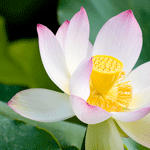
My meditation master once told a story about a stressed executive, who came to him wanting to learn how to meditate.
It didn’t take long to see that the guy couldn’t sit still.
From his finger twitching and body fidgeting, you could see that his mind was racing.
The bags under his eyes told tales of stress-filled, sleepless nights.
If anyone ever needed to tap into the de-stressing benefits of relaxation, this guy was a prime candidate.
But my meditation master turned him away.
“Why on earth would you do that?” we asked him, a stunned class of trainee meditation teachers.
His smile shone gently as he explained.
Meditation is about so much more than just sitting still, closing your eyes and expecting to stumble across inner peace.
It is a three-stage process which, like learning to drive a car or play a musical instrument, takes dedication and practice.
Stage 1: Relaxation
Until you can relax your body and your mind, meditation is nearly impossible. Youl’ll be sitting there, desperately uncomfortable after the first few minutes, totally pre-occupied by your shopping list or last night’s television.
You simply won’t be able to sit still!
Being deeply relaxed is about completely relaxing your body, whilst keeping your mind alert. If you nod off, you’re asleep, not relaxed! Relaxation is also about acceptance – accepting your environment, accepting your body (with all its aches and pains) and accepting your mind (even if it’s chattering away!). Only when you are deeply relaxed will you be able to start to meditate.
If you need help with deep relaxation, you might find this useful: Finding Your Inner Stillpoint – Deep Relaxation CD / MP3.
Stage 2: Concentration
Until your mind can keep its attention concentrated on one thing for a period of time, you’ll find it extremely difficult not to be constantly distracted by other thoughts. Meditating isn’t about “emptying your mind” and “thinking of nothing”.
It’s about allow any thoughts to drift past, without stealing your attention. In concentration, we bring our attention inside, to allow us to move towards reconnecting with who we really are, rather than the external, ego-based world we usually inhabit.
Concentration exercises, such as candle gazing and physical awareness exercises, can help the majority of us who have very poor concentration skills!
Stage 3: Focus
Once you are deeply relaxed and able to concentrate, you will be able to focus on the practices you have chosen, leading you into meditation.
This is where your awareness can really expand and you start to experience the happiness and sense of inner peace that regular meditators achieve.
So my meditation master had turned this man away, because he didn’t want his prospective student to waste time and effort, trying to meditate, when he was still completely unable to relax. After a full twelve months of practicing deep relaxation, which can itself be life-changing, the student returned to become an excellent meditator.
If you have tried meditation and haven’t got the results you were hoping for, then the foundation stages might be missing. It’s well worth finding an experienced meditation teacher to guide you through the process. And you might like to make sure you’re asking them the 10 questions you should ask, BEFORE going to a mediation class.
And the video on the right explains why finding a good class and a good teacher can make such a difference. In fact, it would have prevented me from spending 15 years thinking I was meditating, when I wasn’t! 😉
If you can’t make it to a local class, you might like to check out the 28 Day Meditation Challenge. It’s like a ‘virtual local meditation course’, helping you create a strong meditation habit – no matter how busy your life is. Plus you get access to an online forum, where you can get moral support and answers to your meditation and mindfulness questions.
What have your experiences with meditation been so far?
What would your top tips be to help someone who is learning how to meditate?
We’d love to hear from you via the comments box!




 Are you stressed out? Running around, doing too much, finding it hard to switch off?
Are you stressed out? Running around, doing too much, finding it hard to switch off?


